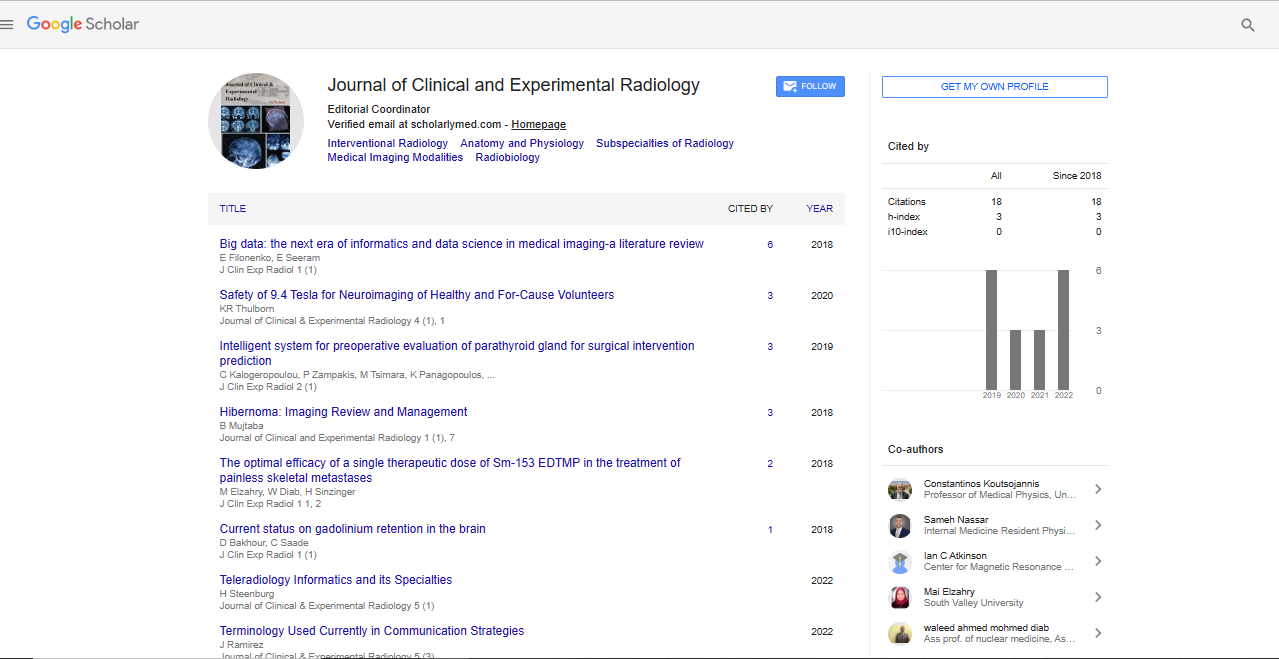Perspective, J Clin Exp Radiol Vol: 4 Issue: 5
Smart Drug Delivery Systems for the Treatment of Cancer
Myron R Szewczuk
Queen’s University, Canada
Abstract
Conventional chemotherapies targeting tumor suffer from limitations such as poor aqueous solubility, causing elevated toxicity, lack of selectivity toward cancer cells, and multiple drug resistance against treatments. This presentation will discuss the development of ‘smart’ drug delivery systems for the treatment of cancer. Here, we engineered drug carrier systems with three delivery strategies that allow drug carriers to initiate the enhanced permeability and retention (EPR) effects at tumor sites, actively and specifically targeting cancer cells with prolonged circulation time and controlled drug release, and thirdly, stimuli-responsive drug carriers. Firstly, the metronomic therapy of a slow-released oseltamivir phosphate (OP) encapsulated in a biodegradable poly (lactic-co-glycolic acid) (PLGA-OP) cylinder implanted at the tumor site without the need for repeated drug administration impeded tumor neovascularization, growth, and metastasis in heterotopic xenografts of tumors growing in a mouse model of human pancreatic cancer. Secondly, OP-conjugated polymeric micelles prepared by RAFT living radical polymerization specifically targeted and halted tumor growth followed with the cancer cell internalization of the micelle loaded with a cytotoxic chemotherapeutic. Thirdly, a pH-responsive, active targeting delivery system was designed using folic acid functionalized amphiphilic alternating copolymer poly(styrene-alt-maleic anhydride) (FA- DABA-SMA) via a biodegradable linker 2,4-diaminobutyric acid (DABA). This latter study revealed that the novel interactions between the modified FA-DABA-SMA polymers with the cells could lead to enhanced hydrophobic drug delivery efficiency as a probe for cancer chemotherapeutics.
Keywords: Conventional chemotherapies, Oseltamivir phosphate
Introduction
Conventional chemotherapies targeting tumor suffer from limitations such as poor aqueous solubility, causing elevated toxicity, lack of selectivity toward cancer cells, and multiple drug resistance against treatments. This presentation will discuss the development of ‘smart’ drug delivery systems for the treatment of cancer. Here, we engineered drug carrier systems with three delivery strategies that allow drug carriers to initiate the enhanced permeability and retention (EPR) effects at tumor sites, actively and specifically targeting cancer cells with prolonged circulation time and controlled drug release, and thirdly, stimuli-responsive drug carriers. Firstly, the metronomic therapy of a slow-released oseltamivir phosphate (OP) encapsulated in a biodegradable poly (lactic-co-glycolic acid) (PLGA-OP) cylinder implanted at the tumor site without the need for repeated drug administration impeded tumor neovascularization, growth, and metastasis in heterotopic xenografts of tumors growing in a mouse model of human pancreatic cancer. Secondly, OP-conjugated polymeric micelles prepared by RAFT living radical polymerization specifically targeted and halted tumor growth followed with the cancer cell internalization of the micelle loaded with a cytotoxic chemotherapeutic.
 Spanish
Spanish  Chinese
Chinese  Russian
Russian  German
German  French
French  Japanese
Japanese  Portuguese
Portuguese  Hindi
Hindi 